If you love the classic pesto flavor, or you simply enjoy growing your own culinary herbs, or maybe you just love the aroma of basil, why don’t you try using hydroponics to grow some fresh basil?
You won’t even need rich soil or the perfect outdoor climate to produce the popular herb that is this fast-growing and luscious basil for your dinner table.
For those who are interested in soil-free systems and creating hydroponic gardens, it may be helpful to learn about the required steps.
Establishing a hydroponic vegetable garden can be accomplished promptly by obtaining fundamental knowledge of hydroponics and the relevant plants.
Basil is actually a suitable option for hydroponics as it can be easily grown without much complexity!
- Related article: Easiest Hydroponic Plants
In this article, we will discuss everything you need to know about growing basil and starting a hydroponic basil garden, from its ideal conditions to its common diseases!
We’ll start off by looking at the benefits of growing hydroponic basil and the equipment needed to get your hydroponics started!
Why Grow Hydroponic Basil?
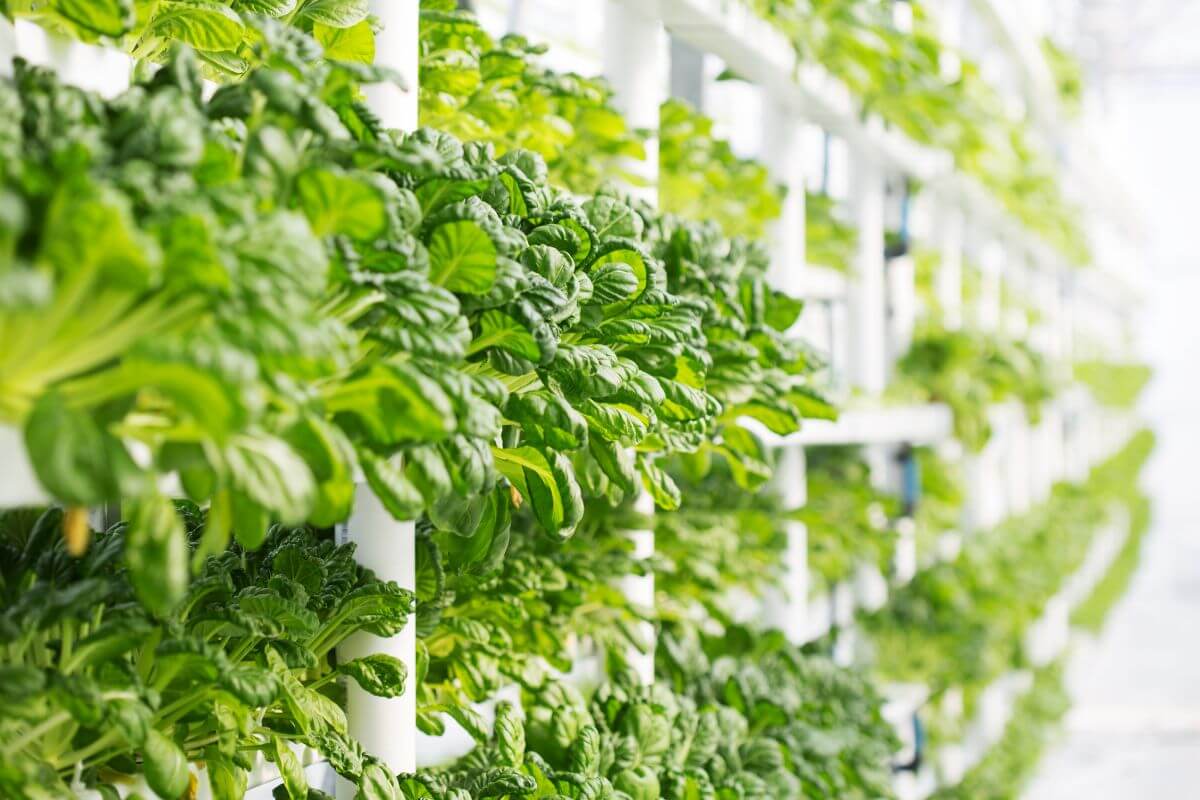
Benefits of Growing Hydroponic Basil
- Growing basil in hydroponics can triple your average yield compared to soil-grown harvest as it provides a faster growth rate.
- Less space is required to grow, which makes it the perfect method for growing in small homes or apartments.
- Reduction in the number of pests compared to soil farming.
- Disease resistance and it avoids diseases that are present in the soil.
- Requires less water usage than soil farming.
- Uses significantly less fertilizer than soil.
- Provides a controllable environment for growing as it eliminates natural factors like the wind and the cold.
- Produces a bunch of herbs, and promises a delicious herb harvest.
Drawbacks of Growing Hydroponic Basil
- Getting your nutrient mix correct can be challenging.
- Your electric bill will be higher as all the equipment needs a steady supply of electricity.
- Hydroponic nutrients are relatively expensive compared to fertilizer for the soil.
- Your plants require daily maintenance and pruning.
- The equipment you need for hydroponics can be expensive.
Equipment Needed to Grow Hydroponic Basil
The equipment associated with hydroponics can become extensive and costly for first-time growers. However, you can acquire the basic equipment first then add it to the collection when it is needed.
The basic equipment needed for growing basil in hydroponics are:
- Air pump – An air pump is an electrical device that adds oxygen to the water in a hydroponic system. This promotes healthy plant growth by increasing oxygen levels. Air pumps have the ability to generate water currents that aid in nutrient circulation and prevent stagnation.
- LED lights – LED lighting is known for its energy efficiency, provision of good spectrum light for photosynthesis, customization to specific plant needs, and low heat emission, which decreases the risk of a hydroponic system overheating.
- pH tester – A pH tester is a tool utilized to determine the acidity or alkalinity (pH) of soil, water, and hydroponic solutions by measuring the Hydrogen ion in a solution.
- Fans – Fans are used to circulate air and provide adequate ventilation for the plants. Their function is to maintain optimal levels of oxygen, carbon dioxide, and humidity. The presence of air barriers created by them can also prevent pests from entering the system.
- Water piping – The method of delivering water and nutrients to plants grown in a hydroponic system through a network of pipes and tubing. Water piping typically includes a main line that delivers water and nutrients from a reservoir, along with sub-lines for delivering water and nutrients directly to individual plants.
- Heater (optional) – In hydroponics, the heater is an electrical device used to keep the water temperature within the ideal range for optimal plant growth and health. It helps maintain a warm environment, which increases root and plant growth plus prevents root rot and other diseases.
- Grow trays – These are shallow containers that are filled with a nutrient-rich solution and then placed on top of a base layer where the plants’ roots can access the solution and grow.
- Growing medium – An inert substance that is used to support the roots of plants and provide a suitable environment for its growth.
- Water reservoir – It stores and circulates nutrient-rich water for the plants in a hydroponic system, while also helping to regulate pH levels and temperature.
- Pruning scissors – These are specialized tools that are used to trim and shape plants in hydroponics. Its sharp blades allow for precise and clean cuts that can help encourage healthier growth in plants by removing dead or diseased foliage. Pruning scissors can also be used to control the size and shape of plants to promote a more aesthetically-pleasing appearance.
How to Grow Hydroponic Basil
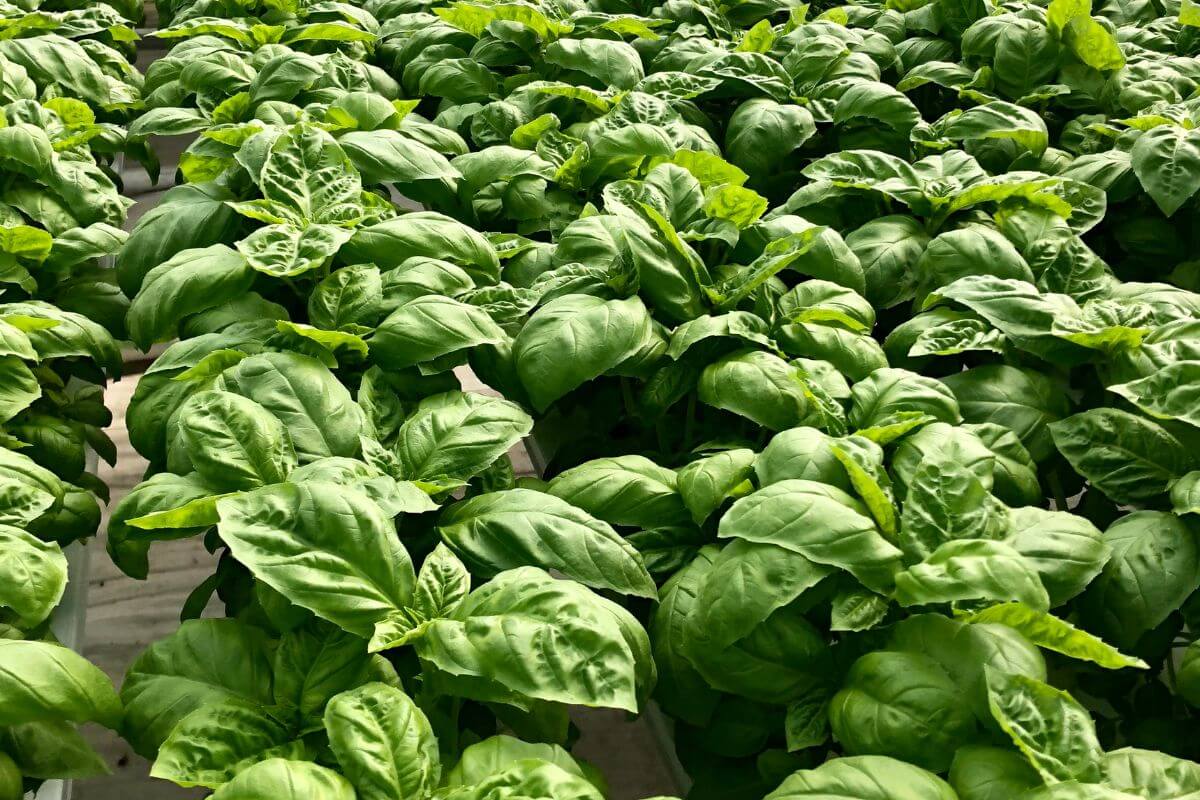
Choose the Basil Variety to Grow
Amazingly, basil grows relatively well and fast under the right conditions in a hydroponic system.
There are some basil varieties that naturally grow better than others, with some being stronger and quicker-growing varieties.
Also, there are over 150 different varieties of basil that occur naturally around the world! And the fastest-growing varieties of basil can be harvested within a minimum of 28 days only, from seed to adult leaves!
Some fast-growing varieties of basil that grow the fastest in hydroponics are:
- Genovese Basil – An Italian variety of sweet basil which has large leaves and a strong, aromatic flavor.
- Rutgers Devotion DMR Basil – This variety of basil was developed by Rutgers University and has aromatic, dark green leaves with a mild flavor.
- Nufar Basil – A type of basil that is cultivated specifically for hydroponics and is actually a hybrid variety, combining the characteristics of both Genovese and Thai basil, making it a flavorful and hardy herb with strong aroma and flavor.
- Prospera Basil – A variety of basil with a sweet taste and strong aroma. The leaves are of a dark green hue while the stems exhibit a tint of purple.
- Newton Basil – This variety is characterized by its large leaves and a sweet flavor profile with hints of anise, cloves, and licorice.
- Aroma Basil – Originally from the Meditteranean region, this basil with a distinct and fragrant aroma can now be grown all over the world, thanks to hydroponics.
- Italian Large Leaf Basil – A type of sweet basil that is characterized by its large and glossy dark green leaves plus its mild flavor.
On the other hand, there are also slower-growing varieties of basil that grow well in hydroponics—some of these varieties offer bigger leaves and produce more oils than others.
Some of the notably slower-growing basil varieties are:
- Everleaf Basil – Known for its unique and attractive leaves, this type of basil has a rich green color with darker veins that give it an interesting look. This variety is also recognized for its potent fragrance and taste.
- Elidia Basil – A variety of basil that is known for its sweet and spicy flavor, plus its unique aroma. Elidia basil has dark purple-green leaves with a slightly wrinkled texture.
- Genovese Compact Plant – A type of basil that is known for its dense and compact growth habit, plus its small and strongly-scented leaves. It also has a distinctive flavor.
- Prospera Compact Basil – A variety of basil that is compact in size and has a sweet anise aroma. Its leaves are dark green and the plant grows to a maximum height of 12 inches.
Choose the Hydroponic Technique
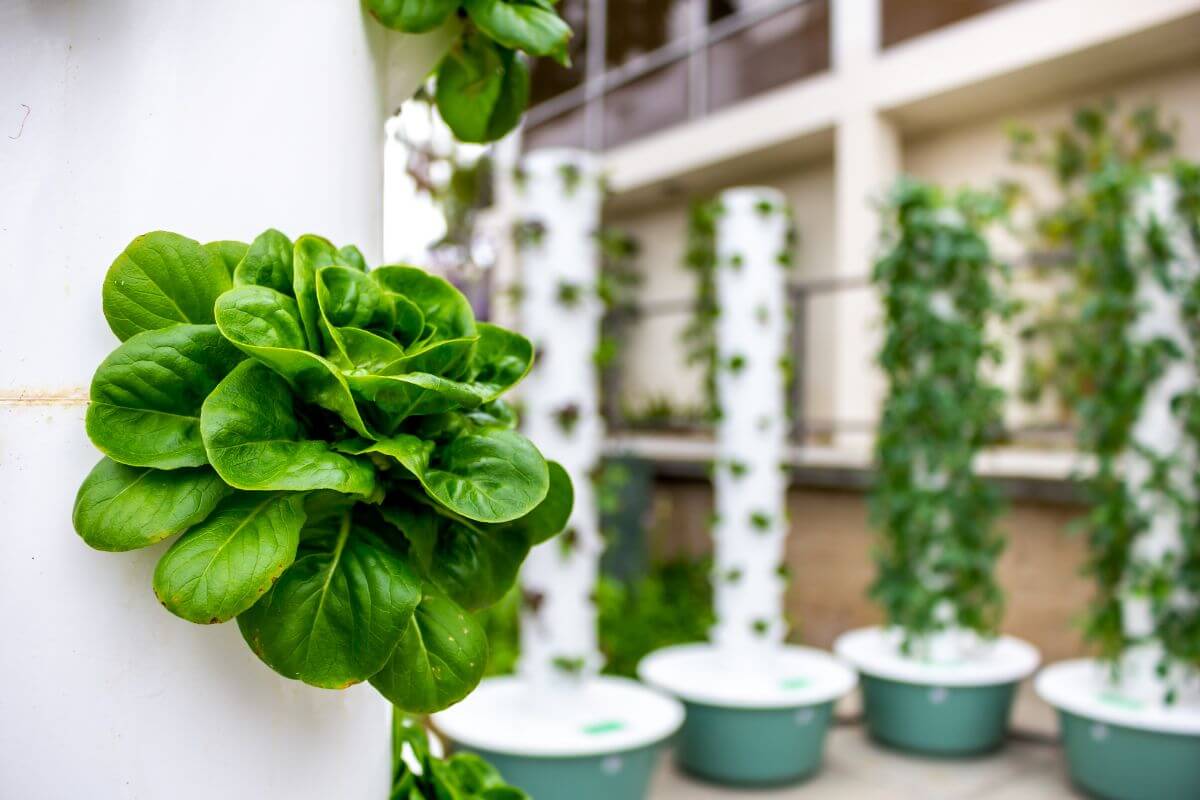
The basic concept of hydroponics has been diversified and developed into 6 common methods and techniques.
Multiple alterations and trials and errors happened over the years to finally come up with these techniques, especially since the variety of plants that were grown have different preferences.
Here are the 6 hydroponic techniques that are commonly used by growers:
- Deep Water Culture (DWC) – This method involves growing plants in containers filled with a nutrient solution that is oxygenated. To maintain aeration in the nutrient solution, a water pump is utilized, enabling constant submersion of plant roots within the solution.
- Wicking – A technique for growing plants without soil, which uses capillary action to provide water and nutrients directly to the roots. This method involves putting a porous material, like a wick, between the water reservoir and the plant’s root system. The material absorbs water from the reservoir and moves it upwards towards the root system through capillary action.
- Nutrient Film Technique (NFT) – A hydroponic method where plants are suspended in air and exposed to light while a shallow stream of nutrient-rich water continuously flows over their roots for irrigation. The regulation of water flow is important for the optimal oxygenation and nutrient uptake of plant roots.
- Ebb and Flow – A type of hydroponic system that involves the regular flooding and draining of the grow bed with nutrient-rich water. The nutrient solution is pumped into the grow bed, providing the plants’ roots with nutrients and oxygen, before being drained away again. The process is repeated multiple times during the day to provide the best possible growth conditions for the plants.
- Aeroponics – A gardening method that utilizes mist to provide nutrient-rich water and oxygen to plant roots. The mist is generated by a pump that sprays water enriched with nutrients as small droplets onto plant roots, enabling direct absorption of oxygen and nutrients from the atmosphere.
- Drip System – A method of providing water and nutrients to plant roots via a network of tubes or pipes originating from the reservoir. The water is released in small drops, hence the name “drip system”. This method of hydroponic gardening is beneficial because it conserves both water and nutrients as the delivery is done slowly over time.
There are two hydroponic techniques that work the best with growing basil: the Deep Water Culture (DWC) technique and the Nutrient Film Technique (NFT).
The Deep Water Culture setup works best with basil seedlings that are floated in a raft over a body of water-containing nutrients. The plants receive their oxygen from an air pump that aerates the water from below.
The NFT requires basil seedlings to be planted in channels that are positioned at a slant. There should be a constant flow of nutrient-filled water that travels down the channels to provide nutrients to the plants.
Light and Temperature Conditions
In order to cultivate basil hydroponically, it requires a consistent supply of strong light for a minimum of 12-14 hours daily.
LED grow lights are a popular choice among growers due to their reputation for being highly effective as a plant lighting source.
The optimal temperature range for hydroponic basil growth is between 65-71°F (18-21°C) and it is advised to keep humidity levels between 40-60%.
Water and pH Levels
Water acts as the soil for your plants, and it contains measurable minerals and has a pH balance. The pH level of water is a measure of its acidity or alkalinity.
It’s advisable to analyze the water source and type before planting because tap water may contain minerals and harmful chemicals like chlorine.
Additionally, topping up your water reservoir will be needed on a weekly basis.
Basil grows better in slightly acidic conditions of water—the best pH level for growing it in hydroponics is between 5.8-6.2 pH.
Growing Medium
At the beginning stage of any plant’s life cycle, it will start off as a vulnerable seed that will eventually sprout into a seedling.
Seedings are supported by their root system. The roots also need some support, which is naturally provided by the soil.
Plants grown hydroponically are first planted in water and start off in growing mediums that are a support system for their roots.
Hence choosing the best medium for your basil plant will ensure that your plant has a healthy root system.
There are other growing mediums that will still work for growing basil in a hydroponic system but the best among them would be Rockwool.
You may use some of these alternative mediums:
- Coco Coir – An organic growing medium made from coconut husks. It is an environment-friendly alternative to soil, and it helps retain water, air, and nutrients for better root development and growth of your plants.
- Perlite – A type of growing medium that is an inert, lightweight volcanic rock. It is heated to high temperatures until it expands and forms small white rocks. Perlite helps to retain moisture and nutrients for the roots of your plants, while also improving air circulation.
- Vermiculite – An inert, absorbent material made from mica that is used in hydroponics for providing aeration and water retention to the root system of plants. It helps creates a hospitable environment for roots to grow and thrive.
- Peat Moss – A substance resembling soil that is created from partially decomposed organic matter in wetland environments. The properties of this substance, including water retention, nutrient retention, and favorable growing conditions, make it an optimal choice for hydroponic growing systems.
- Clay Pellets – Created by firing clay in a kiln and shaping it into small, circular pellets. These materials create a favorable atmosphere for the growth of roots and assist in preserving water, oxygen, and nutrients for the plants in the system.
- Jiffy Plugs – A kind of growing medium that are small, lightweight plugs with pre-fertilized peat moss that can be directly inserted into the hydroponic system. The plugs absorb water and act as a vessel for the roots to grow while providing oxygenation to them.
Nutrient Solution
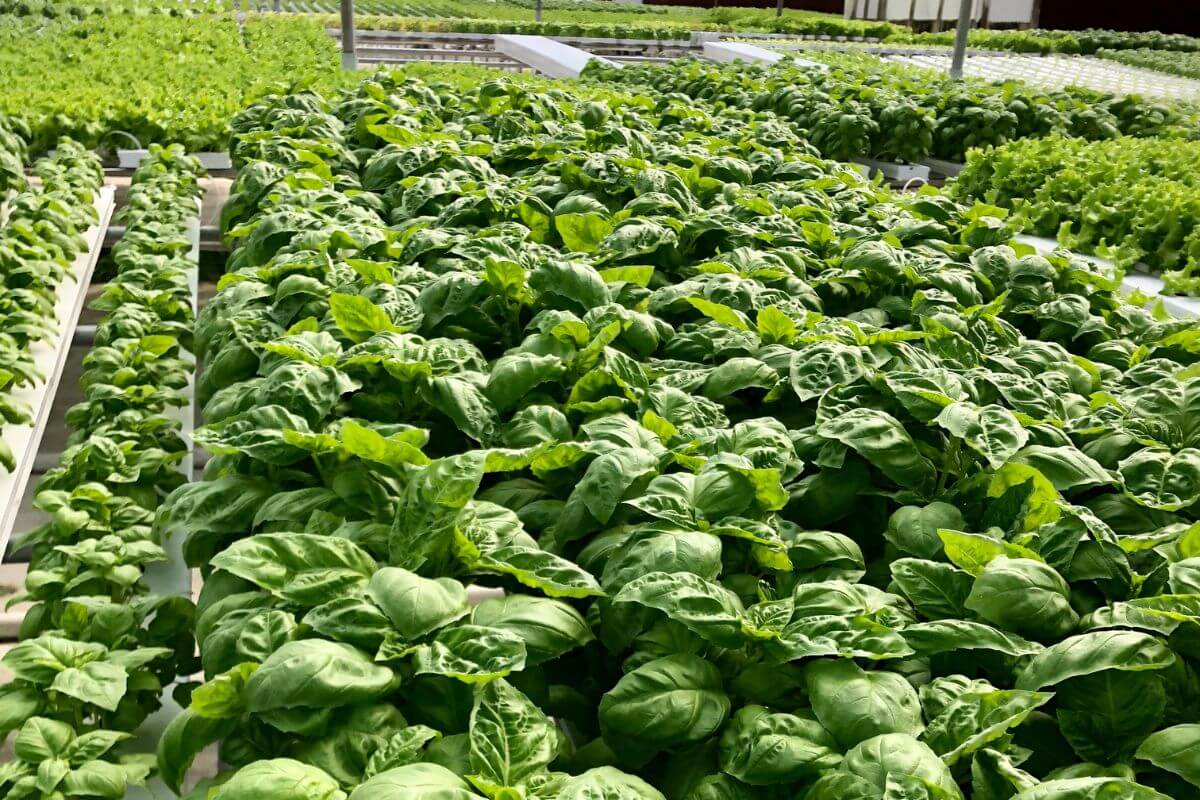
It’s important to be mindful of the nutrient ratio in your water when caring for basil plants as an excess of nutrients can lead to burning.
However, insufficient nutrient levels in plants can result in weakened immunity and increased vulnerability to diseases.
Understanding the specific nutrients basil plants need to thrive will help your plants grow those luscious, green leaves.
Basil’s green leaves are the product that is harvested, and they need a constant supply of nitrogen and magnesium to remain green and healthy.
50% of the nutrient requirements for basil are a mix of calcium and potassium, and the other 50% should be nitrogen and magnesium.
Pollination
Basil does not need to be naturally pollinated by bees, insects, or through wind pollination as it is a self-pollinating plant that has both male and female parts on its flower, unlike most plants.
Cross-pollination may pose a challenge for hydroponic growers who cultivate multiple basil varieties in their systems.
To prevent cross-pollination, it is recommended to separate different varieties.
Pruning the Plants
Pruning your basil plants should be done on a regular basis. Dead leaves must be cut and removed from your plants.
If pruning is neglected, the root system of your plants will begin to work harder to provide nutrients to all the excessive stems.
This constant pressure on the basil plants’ roots will cause them to split and your plants will acquire a bitter, unpleasant taste.
Propagating the Plants
Propagating basil in hydroponics can be done through seeds or using the cuttings of adult plants. The optimal temperature for basil seed germination is 75°F.
To facilitate growth, put the seeds in a growing medium and ensure they remain adequately hydrated.
For these germinated seedlings to thrive, it is necessary to provide them with at least 6 hours of light every day. Remember that these are prone to diseases and should never be overwatered.
Using cutting from a mature basil plant is very common and skips an entire seedling process.
Propagation can be done by taking a 4-inch (10 cm) cut from the adult basil plant. The cut must be made below the basil plants’ leaf node.
Place the cuttings in a bowl or glass and provide them with large amounts of light. When the cuttings start to show signs of rooting, place them in a growing medium such as Rock wool or Jiffy plugs.
You can then transplant the cuttings into your hydroponic system.
For cutting propagation to be successful, the cutting must be taken before a plant has reached its pollination.
Harvest the Basil
When your basil plants’ leafy greens have reached their optimum size, you can begin to harvest the leaves as they are needed.
Cut the leaves off the stem and be sure to leave some of them so the plant can still photosynthesize.
Troubleshooting Hydroponically Growing Basil
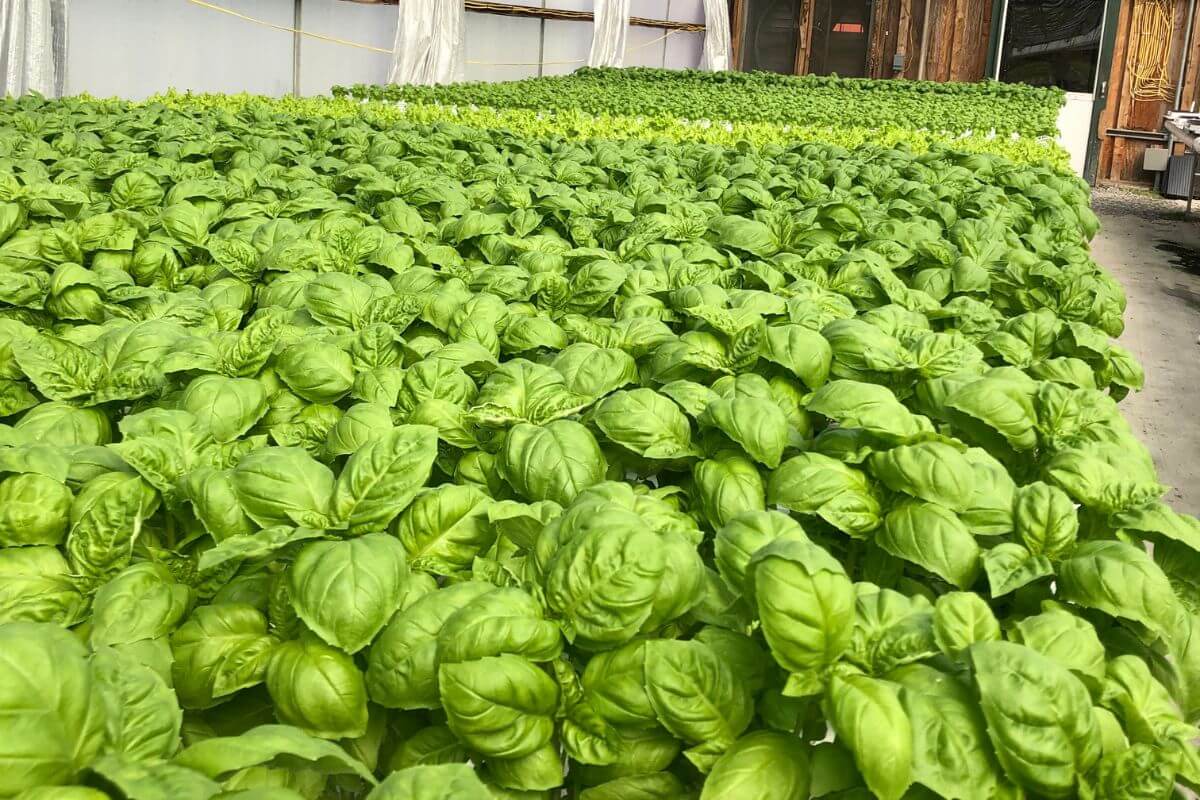
Maintaining optimal conditions is the key to keeping your basil plant’s health ideal as well.
However, basil is inevitably a target for common pests such as aphids, Whiteflies, and Gnats.
Thankfully, you can use pesticides or insecticides to kill off any unwanted pests.
The disease that basil is most likely to contract is Fusarium Wilt and Dampening Off.
Diseases can be prevented through the regular sterilizing of equipment, supplying the correct nutrients on a regular basis, and ensuring your plants have a sufficient supply of oxygen.
The most common problems a hydroponic basil grower will face are administering the correct amount of nutrients and checking the pH levels of their water.
Use a pH tester and EC meter to check the levels pH levels and nutrient content of the water.
Common Growth Problems
Common growth problems associated with hydroponics are root rot, mold, algae, insufficient light, and nutrient-related problems.
Root Rot will occur in your hydroponic system when it has been infected by pathogens that carry the disease. Common causes of Root Rot in hydroponics plants are from infected plants that have been transplanted into your system.
Fungus Gnats and other insects are potential carriers of Root Rot. To prevent Root Rot from affecting your basil plants, keep the water temperature of your hydroponic system to 75°F.
Sterilize your gardening tools on a regular basis and regularly check the roots of your plants.
Hydroponics creates the perfect environment for Mold to grow. Mold or Mildew needs a damp, wet environment and dark environment to survive.
You can prevent Mold from occurring by aerating your growing area, controlling the humidity, and regularly cleaning your equipment.
Algae will always occur in a hydroponic system as it is its perfect habitat—there’s sufficient light, warm water, oxygenated water, and nutrients.
As the algae use up all the nutrients and oxygen in your water, your basil plants will suffer the consequences.
Always remember to clean the sides of your water reservoir and remove algae to prevent them from infecting your hydroponic system. Using dark piping in your hydroponic system will also decrease the growth of algae in your piping.
Ensure that your water source and roots must be stored away from any direct sunlight to avoid algae from forming.
Plenty of light is required as your plants need a sufficient supply of it to grow. Ensure that your lighting source offers sufficient and broad-spectrum lights.
The growth of your plants will be stunted should you not provide the correct lighting.
Common growth problems with your plants are more than likely because of insufficient nutrients or an oversupply of nutrients. An oversupply of nutrients will cause your basil plants to burn and lockout.
An insufficient supply of nutrients will stunt the growth of your plants and cause the foliage of the leaves to turn yellow.
Common Pests
The most common types of pests that occur in hydroponics farms are:
- Aphids – They are small sap-sucking insects that damages the plant’s foliage and flowers by feeding on plant sap.
- Whiteflies – These are tiny, white-flying insects that feed on the underside of leaves and cause stunted growth in plants.
- Spider Mites – They are tiny arachnids that prefer dry conditions and feed on the underside of leaves which causes yellowing of the foliage and webbing on plants.
- Fungus Gnats – These are small flying insects that breed in moist soil or hydroponic systems, feeding off decaying organic matter. They can carry root rot, which is a fungal disease that can spread quickly throughout your system.
Use an insecticidal soap as it will eradicate the most common pests in your hydroponic system.
Placing sticky traps around basil plants is another common solution for reducing the number of pests in your hydroponic systems.
Ladybugs are predatory insects that particularly enjoy hunting Aphids. Place a few Ladybugs on your basil plants and it will prevent any aphids from colonizing your hydroponic system.
Common Diseases
Some common diseases of basil hydroponic growers is Downey Mildew. Downey Mildew causes the leaves of your basil plants to go yellow and have a grey growth that will occur on the undersides of your leaves.
Downey Mildew is caused by wet conditions and by excessive watering of plants. To avoid having Downey Mildew occur on your leaves, ensure that there is adequate drainage for your plants.
Basil plants are also vulnerable to Root Rot. This disease is caused by overwatering of plants. Adequate drainage is required to avoid your basil plants from being infected by the disease.
Final Thoughts on Growing Basil Hydroponically
Hydroponic basil plant is a versatile and convenient way to grow this aromatic herb.
By optimizing the nutrient levels, light levels and conditions, and other growing parameters, you can produce an abundant crop of vibrant and healthy basil plants, all without soil or pesticides.
Hydroponic basil leaves are an excellent and popular choice of field crop, regardless if you’re an avid gardener, a novice grower, or just looking for a new hobby!
It also offers a fun and rewarding growing experience that anyone can enjoy on top of it being a flavorful and nutritious herb.
So why not give it a try and see the benefits of a hydroponic environment and hydroponics setup for yourself?
Check out these articles to know more about growing hydroponic plants and herbs:

